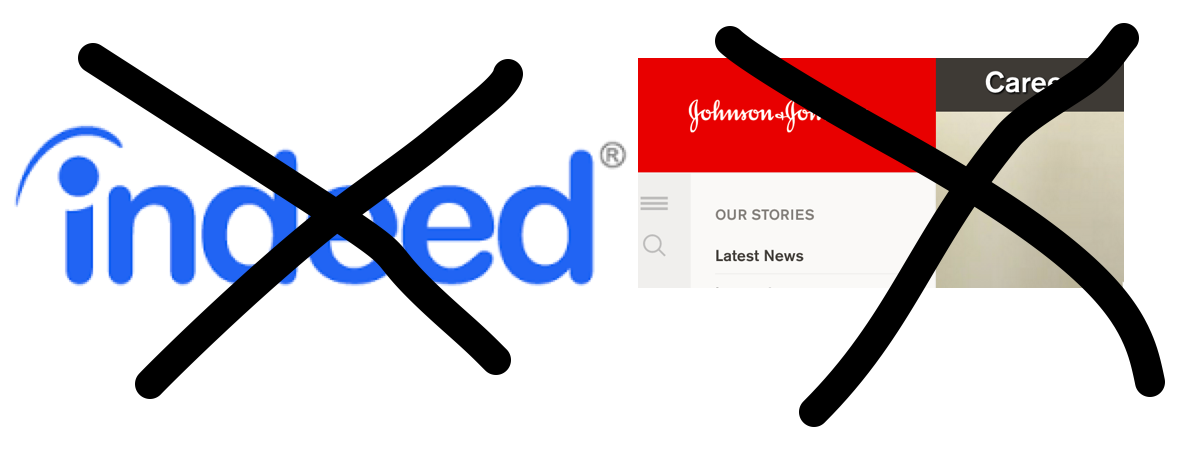
These days I get bombarded by Orthopedic professionals who are in transition and looking for their next position. CEOs call me, seasoned professionals call me, and even fresh grads call me. Some are bored and unchallenged, some are freshly laid off, and some are just looking for a bigger challenge or a startup adventure.
The most common question is…. “What’s wrong with my resume?”
After chatting, I quickly come to the conclusion,“It’s not your resume, it’s your approach.”
5 Steps to finding your next career move.
Nobody else is going to tell you this stuff. Especially recruiters. But I want to help you as a friend, a fellow orthopedic peer and a your favorite recruiter.
Here is my very BEST ADVICE to help you find your next position. Follow these 5 steps and you will get there.
#1) Start with LinkedIn.

LinkedIn is your new resume! It is your most important personification.
LinkedIn has almost 350 million users and this is where people who may hire you hang out. Like it or not, recruiters, CEOs, hiring managers and HR pros all look at your LinkedIn profile first, resume much later. The bad news is that they will look at your profile for literally, 5 seconds.
So, what does your LinkedIn profile convey in 5 seconds?
There are entire courses on improving your LinkedIn presence. I am not going to give you a full course. Just a few makeover tips to get you started (listed in order of importance).
a) Profile picture – We humans process and remember faces better than words or data. Your face is your best ID. Your profile picture should be a close up of your face only (please no dogs, no buildings, no scenery, no partner cut out of the picture). If it’s not just your face, change it right now.
b) Headline – Your headline is what you have to offer the world (not your current title and employer). LinkedIn gives you 120 characters to use in your headline. You should spend hours refining these 120 characters until it is perfect. You should spend a lot of time fine-tuning your headline.
DO NOT let LinkedIn create a default headline for you (most people do this) and do not list your current title as your headline.
Examples:
- Consultant for Fundraising at ABC, LLC
- Personal trainer at XYZ Fitness.
DO say who you are, who you help, and how you help.
Examples:
- Fundraising consultant who helps major non-profits raise more money. Clients include the Red Cross and YMCA.
- Personal Trainer who helps high school athletes get stronger and faster. Certified by the American Council on Exercise.
For more detailed instructions on improving your headline, read this.
c) Location – Be careful what your location says about you. If you want a job in the US, but your location is OUS, you will NOT SHOW UP in candidate searches. Change your location to where you want to get a job or something generic like the United States (you do not have to choose a specific city.)
d) Contact– Make sure that you are easy to reach with your email and cell phone publicly listed. Also, please please get rid of your university email address and get a generic email address. A dot.edu address says that you haven’t entirely left the university nest.
e) Keywords – Pack your profile as dense as possible with industry keywords that a peer may search in LinkedIn or Google. This will help you show up in more LinkedIn searches. List what you did at each company in detail including specific industry words that someone may search.
f) Portfolio – If you are a professional who can show your work output (marketing or engineer etc) add a product portfolio to your LinkedIn. Example: https://www.linkedin.com/in/lawrencekiefer/ How to video on showing your work: https://www.youtube.com/watch?v=5-YOkJZomWU
#2) Go “Old School” Networking

Your best chance of finding that next position is already in your contact list. Let me repeat – it’s your BEST chance. I want you to literally get out a blank street of paper and start a list. Compile a list of everyone you know in the industry. Look through your contact lists. Look through your emails over the years. Look through your LinkedIn contacts. Look through your TEXTs.
Then, email or call everyone on the list, one-by-one. Catch up, ask them if you can help them with anything first (advice, consulting, contacts, etc), then mention that you are looking to make a career move and be specific as possible.
Odds are that someone on your list knows of an open position (perhaps not even advertised) that is perfect for you. This is the #1 way of finding your next job.
#3) Tune up the resume

Finally, it’s resume time. Less important than your LinkedIn profile, but still necessary to win you a phone interview.
Spend 90% of your time writing and rewriting the top 1/3 of the page. People will scan the very top then decide whether or not to read the rest.
Format and number of pages don’t really matter. But if you want to stand out from the crowd, create a one-page graphical resume like this – [ PDF example ]. This will take more effort, but hiring managers will not be able to put it down and will read your entire resume.
More detailed tips are:
a) Remove your address. Simply include an email address and phone number. A hiring manager may see your address and withdraw you from consideration if they think your commute may be too long. How far you are willing to travel for the right job should be your choice.
b) Add a Qualifications section and remove the Objective. Include achievements, notable skills, and significant experiences. It’s a great, at-a-glance way to show what you have to offer.
c) List your most recent 10-15 years of experience. Focusing on accomplishments and skills from that time frame will keep you relevant and if you have gaps in your work history, instead of month/day/year, simply use the year.
d)Limit bullet points to 5-6 per job. Stick to the most pertinent job duties.
e) Use numbers and percentages whenever suitable. Numbers stand out and are a great way to measure your accomplishments or to emphasize the scope and scale of your responsibilities.
f) Move your education to the bottom of your resume. Unless you’re a recent college grad, you’re likely to have plenty of more current and relevant work experience to shine the spotlight on.
g) Don’t include “references available upon request.” Employers likely WILL ask for references anyway, so it’s redundant.
#4) Advice on resume submitting
DO NOT submit your resume to online job boards or through company sites. DO NOT submit your resume to online job boards or through company sites. DO NOT submit your resume to online job boards or through company sites.
Resumes just get lost in the noise of the hundreds of uploaded files and records. Who really looks at all of these anyway? Better to come into a company with a personal inside reference or through a trusted recruiter. Once you submit your resume to companies online, you are kryptonite to the recruiters. They will not touch you.
#5) Advice on contacting recruiters
Don’t email the recruiter saying “here is my resume, can you help me find a job?” This will get your email deleted quickly.
Do email the recruiter with a brief intro paragraph on who you are and why you are seeking a new position and answer these four questions in the email.
- Key Strengths (what makes you special)?
- Desired Titles?
- Open to what geographies?
- Compensation needs?
Happy hunting.
If you follow these 5 tips, then you may not need my help as a recruiter.
–Tiger

 The Orthopedics Industry
The Orthopedics Industry 